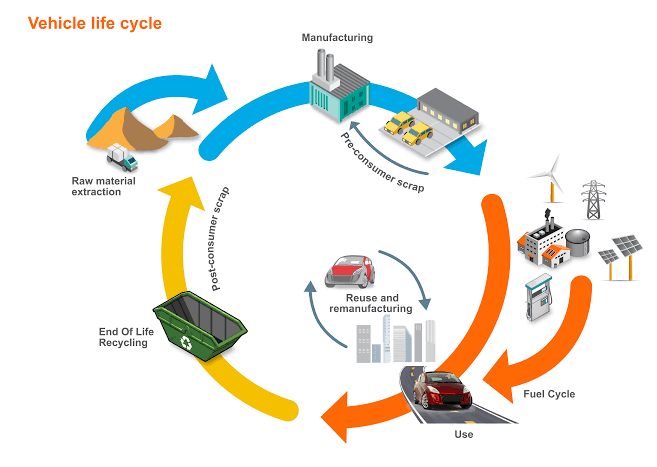Environmental Impact Of Fossil Vs. Electric Vehicles
Emission And Its Harmful Impact
Numerous vehicles are plying on the road, rail, and air. Aircraft, Trains, Bikes Cars, Buses, and Trucks mostly work on fossil fuels. The world has seen significant players manufacturing different models and brands of these vehicles, and the number is on an increase as consumer demand rises. Not just the large vehicle makers, there are several medium and small scale automobile makers like VTK Automobiles depending on this largest manufacturing industry. In the wake of many natural calamities due to climate change, it is time to introspect our dependency on fossil fuels in terms of vehicles.
Air pollution is deemed the primary cause of climatic and environmental changes. One main reason for air pollution is the carbon emission from vehicles. When fuel burns in an internal combustion engine of a vehicle, it releases fuel residuals and air, which is muscle nitrogen oxides, carbon monoxide, and hydrocarbons. These are very harmful gas particles that can affect the environment and health alike. The emissions are more or less the same for vehicles and equipment plying on fuels like diesel, kerosene, or gasoline.
Carbon monoxide and nitrogen oxides can quickly get into the respiratory system and blood of the human body. Carbon monoxide combines with blood affecting its ability to transport oxygen. Nitrogen oxide can easily affect the eyes and lungs. Hydrocarbons and oxides can combine to create a secondary pollutant called ozone. Ground-Level ozone can create smog that can cause wheezing, coughing, and shortness of breath resulting in lung damage. Air pollution has become a significant cause of public health and environmental issues.

Ways To Control Carbon Emission
There are various means by which one can control carbon emissions in vehicles. A zero-emission vehicle is one efficient way by which hydrocarbon emissions can be controlled. ZEVs include vehicles that operate on battery, hydrogen fuel cells, and hybrid-electric cells. This technology is in the baby stage, and very few countries have opted for ZEV standards for their motor vehicle act. California is one such state in North America that has fully implemented zero-emission vehicle standards, and other states are joining this initiative.
Proper maintenance of emission control systems in vehicles is another way of controlling emissions in fossil fuel-run vehicles. Good maintenance will increase fuel efficiency, performance, and the life of the vehicle. Care must be taken while storing fuel to reduce evaporation into the atmosphere. Fuel, when combined with dust particles in the air, will form larger particles that create the ozone layer.
Vehicle manufacturers need to make sure they follow standards and regulations as aligned by the government. Regular emission inspection by the motor vehicle department is mandatory. They must take necessary steps to regulate emissions, including recommendations to repair faulty emission systems.
Check Out the recent article – https://www.penncapital-star.com/energy-environment/cap-and-trade-for-your-car-pa-is-looking-at-limiting-transportation-emissions/.

Carbon Emission In The Lifecycle Of A Vehicle
A vehicle goes through different phases, which are the manufacturing phase, the use phase, and the emission phase. Each stage has a different level of emissions. And, this would be different in fossil-fueled cars and electric cars. One might think that an electric vehicle has zero-emission. But, when you study the different phases, a vehicle goes through and the process, it is alarming to find that electric vehicles too leave a carbon footprint. If you look at the lifecycle of a vehicle, electric vehicles leave more emissions in the manufacturing phase.
The manufacturing phase of a vehicle includes mining, building materials, manufacturing components, and the final assembly of vehicles. Electric cars are fueled by batteries made out of lithium. Process of manufacturing an electric vehicle that includes mining of lithium, nickel, manganese, and cobalt to make the batteries has resulted in increased emissions when compared to manufacturing fossil-fuel vehicles. In addition to the emissions, mineral extraction has resulted in water depletion impacting the ecosystem.
If you take the entire lifecycle of a vehicle, electric cars emit more carbon during the manufacturing and recycling phase, whereas fossil fuel vehicles emit more carbon in the use phase. In the recycling phase, battery and car component recycling result in more emissions. This may reduce in the future as more and more cells are recycled than manufactured. But, overall, an electric vehicle emits 18% less carbon when compared to fossil fuel vehicles.


No Comments